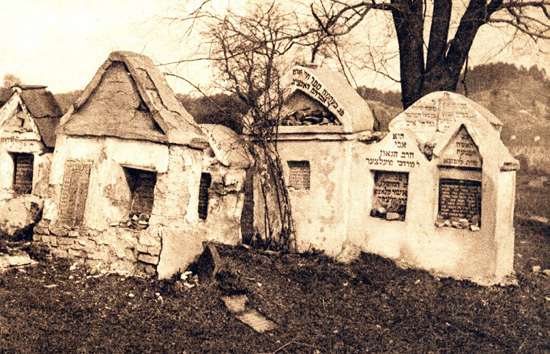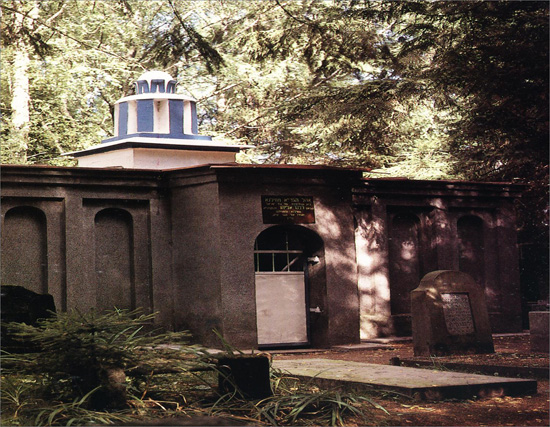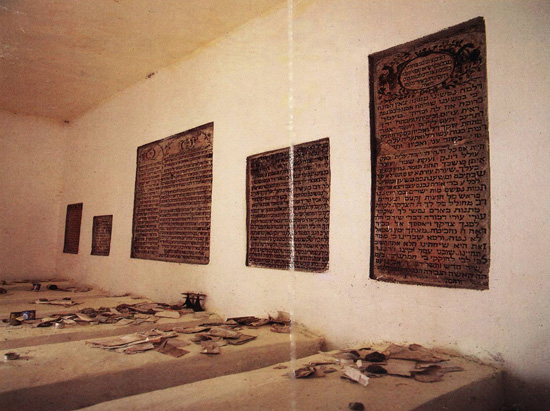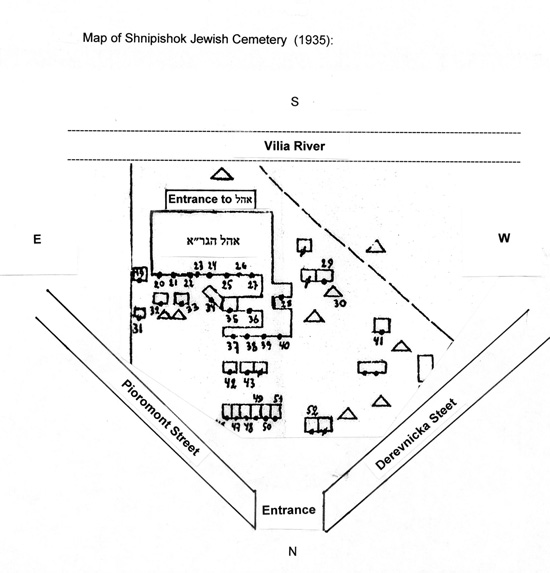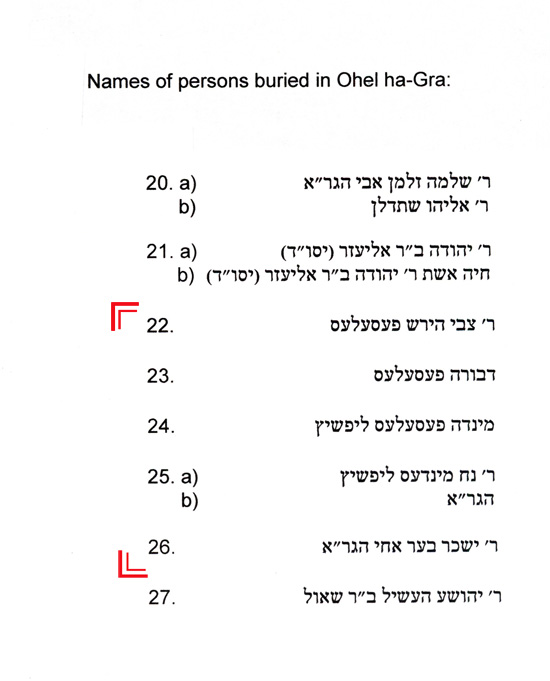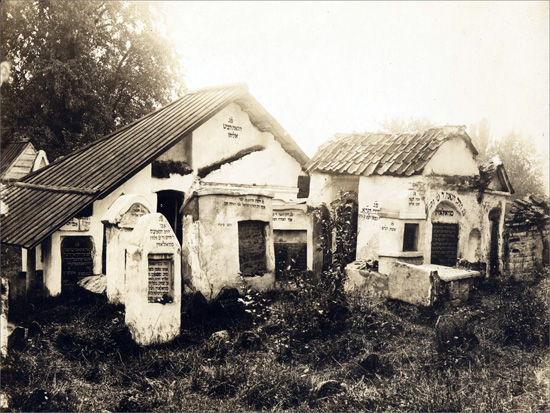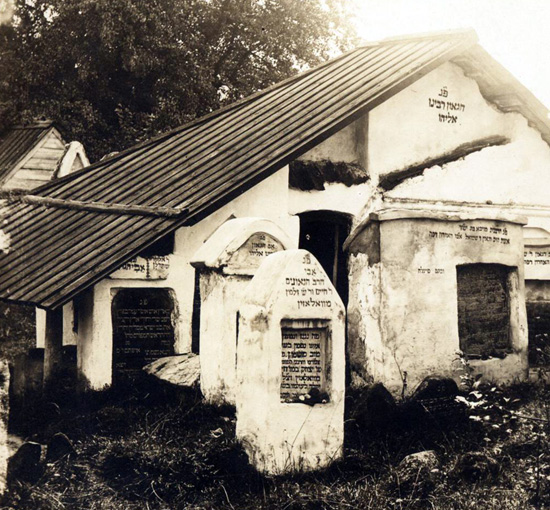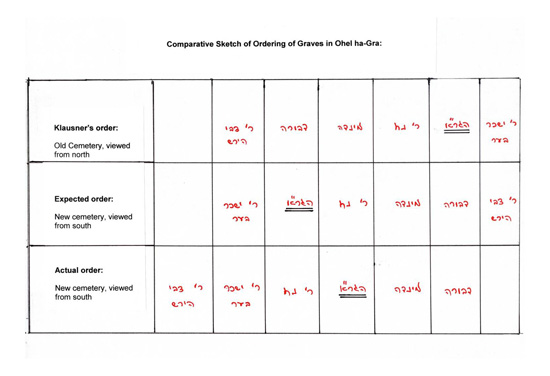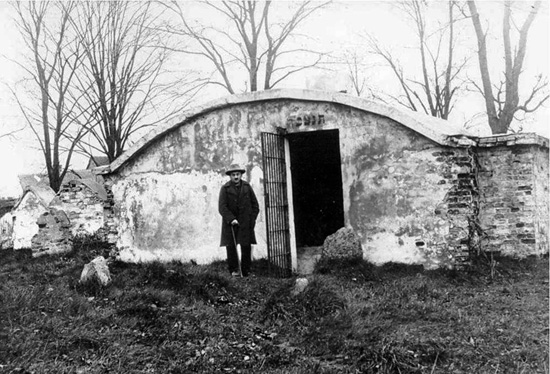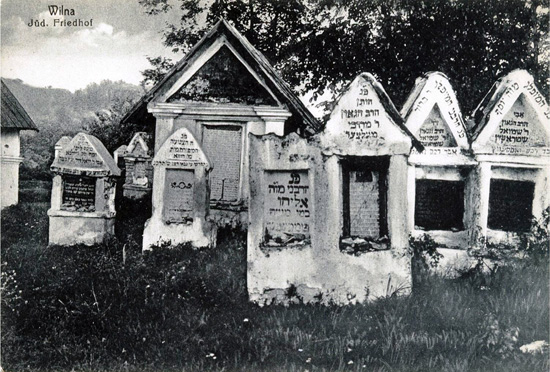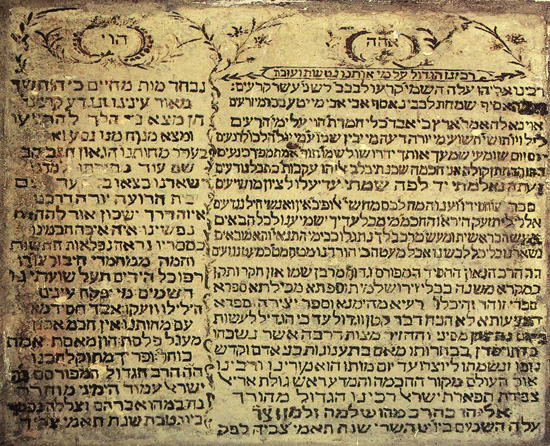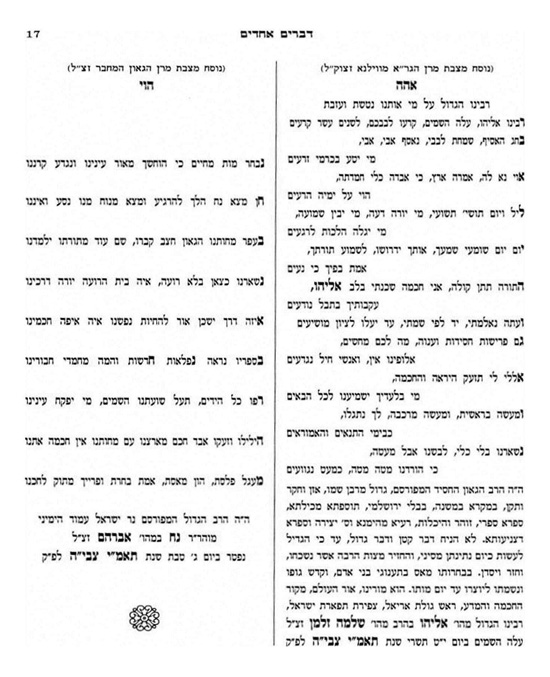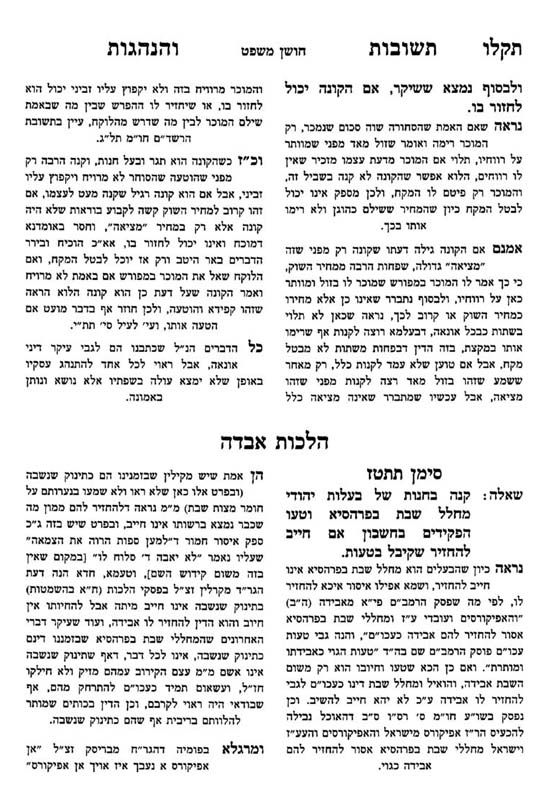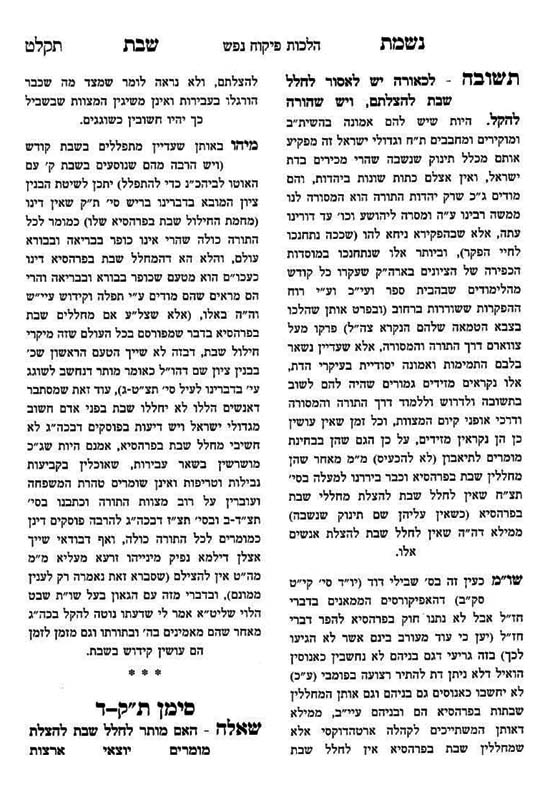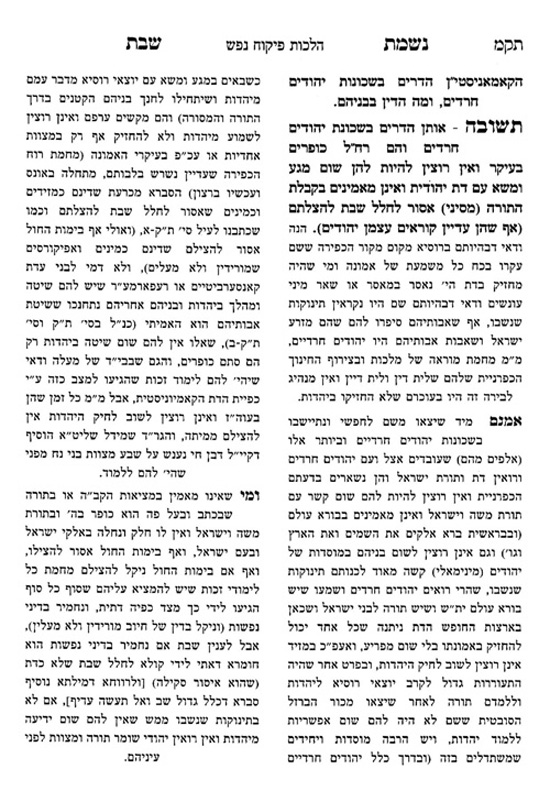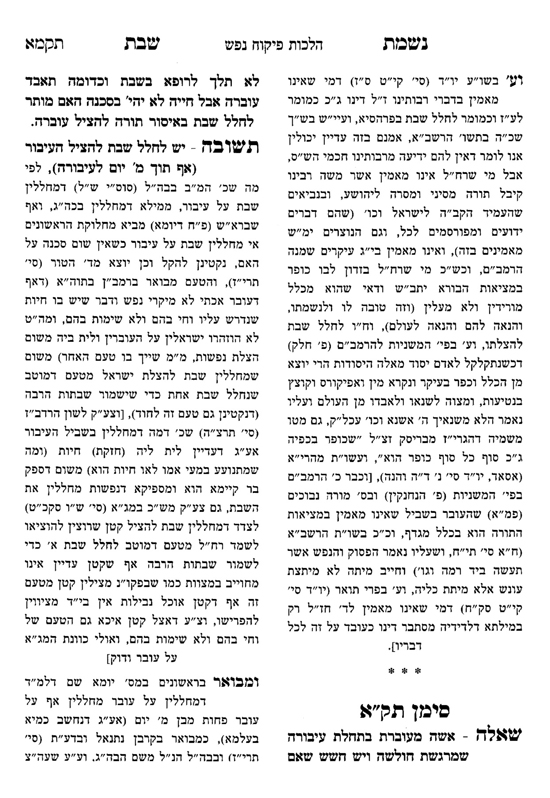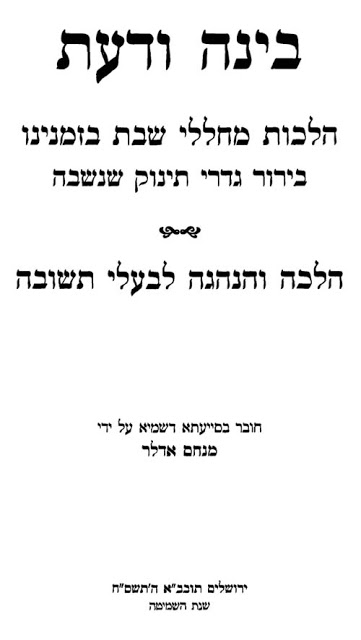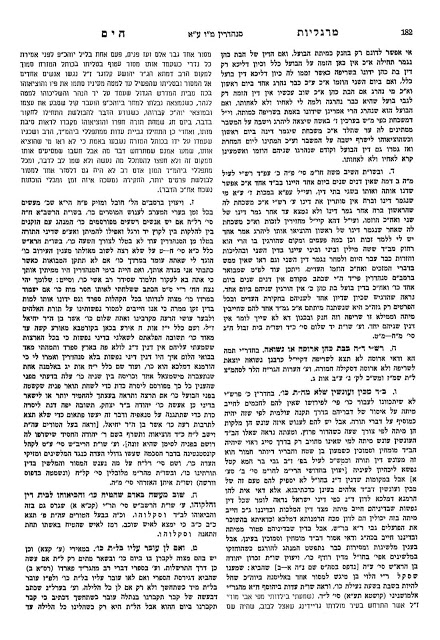Rashbam the Talmudist, Reconsidered
by David S. Farkas*
Abstract
Rashbam (Rabbi Samuel ben Meir of Troyes) is known today primarily for his Biblical commentary, which is often seen as a forerunner to modern academic study of the Bible. Rashbam’s Talmudic commentary, by contrast, is often dismissed as merely a more “prolix” version of his grandfather Rashi, devoid of the critical methods that make his Biblical commentary unique. While a proper study of Rashbam’s Talmudic exegesis has yet to be written, this exploratory essay seeks to demonstrate that many of the hallmarks of modern academic study are all featured regularly in Rashbam’s Talmudic commentary. Several examples are cited for each of a wide variety of academic fundamentals, including Rashbam’s awareness of the development of the Talmudic text; appreciation of general Talmudic methodology; distinctions made between the stama d’gmara editors and the actual statements of chazal they edit; and the Rashbam’s preference for critical editions of the Talmud.
Likewise, examples are shown highlighting Rashbam’s use of field research, and his aversion to wild or exaggerated statements of
fact. In brief, the essay takes some initial steps towards dispelling the prevailing notion of a “split personality” Rashbam when it comes to his commentaries to the Torah and the Talmud, and seeks to show the uniformity and consistency shown throughout his entire corpus.
*Mr. Farkas, an attorney practicing as in-house labor counsel for FirstEnergy Corporation, received his rabbinic ordination from Ner Israel Rabbinical College in 1999. He lives with his family in Cleveland, Ohio.
Rashbam the Talmudist, Reconsidered
David S. Farkas
Professors of academic Talmud are not known for their practical social experiments, but here’s one that would be interesting to try:
Take two men, each unknown to each other, and each reasonably knowledgeable in both traditional learning and modern methods of study. Put each of them in separate rooms, one with a Rabbinic Bible (Mikraos Gedolos) on the complete Torah, and one with the tractates of Bava Basra and Pesachim of a standard edition of the Babylonian Talmud. Tell each individual he can take as long as he needs to study the commentary of Rashbam upon each [perhaps this is why the experiment remains only a hypothetical] and report back when he’s done. When the subjects return, ask each of them independently: Is Rashbam a traditional commentator, or is he a modern academic? As a corollary, the professor should ask his students a follow-up question: What do you think the two subjects will answer?
No hard data exists for a definitive answer, but I suspect most students would answer that subject #1, holding the Bible, would think Rashbam an academic, while subject #2, with the Talmud, would think him a traditional commentator. However, and paradoxically, I also think the subjects themselves, having just studied the material in isolation, would both provide the identical answer, and would find the Rashbam thoroughly modern in both.
To be sure, the question in the experiment above is somewhat misleading, as obviously Rashbam was a traditionalist through and through, and no one would ever seriously claim otherwise. Rabbi Samuel ben Meir of Troyes (c. 1085-1158), the grandson of Rashi, was clearly well grounded in the learning of his times and fellow Ballei Tosafos. But his commentary to the Torah has long stood out for its eye-opening and often daring interpretations of scripture. Rashbam does not hesitate to state what he believes to be the straightforward meaning of the verse, the
peshat, even when it conflicts with the opinion of
chazal before him. In this way Rashbam is often seen as something of a forerunner to academic students of the Torah, who use modern methods of study to arrive at what they believe to be the original meaning of the text.
[1]Despite this, Rashbam’s commentary to the Talmud is often entirely ignored by academics, not to say disdained. In her book concerning Rashbam’s commentary to Job, Sara Japhet notes that a proper study of the characteristics of Rashbam’s Talmudic exegesis has yet to be written.
[2] In its entry on Rashbam, the Jewish Encyclopedia devotes considerable space towards analyzing his biblical commentary, but dispenses with his Talmudic commentary with little more than a single sentence, and that only to dismiss it as “much weaker than Rashi.”
[3] And in his review of Elazar Touitou’s
Rashbam Scholarship in Perpetual Motion, Mordechai Cohen concludes with three suggestions to augment existing scholarship on Rashbam, one of which urges a greater focus upon Rashbam’s biblical commentaries beyond the Pentateuch.
[4] Nowhere, however, is any suggestion made to consider Rashbam’s Talmudic output.
This neglect shows no sign of change anytime soon. Typical are the comments of one knowledgeable blogger, who writes, concerning a major conference organized by Bar Ilan University in 2011 devoted to the study of Rashbam:
“It amazes me, the amount of attention that scholars of medieval biblical exegesis lavish on a fairly limited corpus. I must admit that it also frustrates me that despite all this enthusiasm for studying Rashbam’s biblical exegesis, his Talmudic commentaries and, to an even greater degree, his Halakhic writings have received virtually no attention whatsoever.”
[5]Indeed, the conference referenced by the writer focused exclusively on Rashbam as a pashtan on Torah and Kesuvim – with not a single session devoted to his writings on shas.
We do not have Rashbam’s commentary to
shas. Although there is evidence that he wrote much more, we are left essentially with his commentary to most of Bava Basra (“BB”) and the last chapter of Pesachim.
[6] Still, this amounts to nearly 370 pages of commentary, more than enough to get a firm sense of his methods. “Prolix” is a word often used to describe his Talmudic commentary. “
Peshat”, however, is not. This seems strange. Why would one man’s commentary be so markedly different from one arena to the next? If Rashbam’s commentary displays all the signs of modern methods of study in his commentary to the Torah, why, then, does his commentary to the Talmud seem so devoid of the same?
The purpose of this brief essay is to show that, contrary to the common misconception, Rashbam’s Talmudic commentary displays precisely the same hallmarks of intellectual honesty and modern methods as he displays in his work on the Torah. Below I cite concrete examples to prove the point. However, there needs to be a framework for this type of study. Nearly every single Tosafos in shas probes into the text, yet few would mistake their methods for that of a modern critical approach. What, then, are the hallmarks of the modern method in which we can test the hypothesis we began with?
There is certainly no definitive answer to this question. One writer identifies no less than six different aspects of what he calls the “scientific-academic” approach to the Talmud, and in passing notes that “the approaches termed “academic” or “scientific” today are actually closer to the approaches of classical Talmudic scholars than those in use by traditional religious institutions today.”
[7] Many others have written about the academic study of the Talmud without any attempt to reduce the approach down to a specific list of methods.
[8] Accordingly, with no pretenses to believing the following to be exhaustive, this author will follow in the footsteps of at least one of his forebears in identifying the following six prerequisites necessary for a proper academic approach to the study of Talmud:
[9]1) An understanding of how the Talmudic text developed over time; a recognition of the layers within each sugya and how the existence of such layers can help us better understand the text;
2) A recognition of the stama d’gmara; an appreciation of the fact that the anonymous editors of the Talmud sometimes paraphrased or
otherwise edited the actual statements of the tannaim and amoraim;
3) An attempt to use the best critical editions available;
4) A feeling for the overall methodology of the Talmud as an organic whole, to aid with understanding the immediate text at hand;
5) A general sense of rationalism, or an aversion to wild or exaggerated notions;
6) A willingness to use field research beyond the bare text to clarify the meaning of difficult or obscure terminology.
No doubt others could add or subtract from this list, or refine it in some other way. However, the foregoing represents at least a decent summary of some of the more fundamental elements of a modern critical approach to the study of Talmud. And with that in mind, let us see if these methods are employed by Rashbam in his commentary to Bava Basra and Pesachim.
[10]* *
*
Development of the Text
In the following examples Rashbam demonstrates a keen understanding of how the development of the Talmud affects the understanding of the passage in front of him.
1) אמר רבא א”ר נחמן מחאה בפני שנים ואין ואין צריך לומר כתובו מודעא בפני שנים ואין צריך לומר כתובו הודאה בפני שנים וצריך לומר כתובו קנין בפני שנים ואינו צריך לומר כתובו וקיום שטרות בשלשה
ואין צריך לומר כתובו. שטר מודעא כללא דמילתא כל מידי דזכות הוא לו אין העדים צריכין ליטול הימנו רשות והא דלא כייל ותני להו ולימא מחאה ומודעא וקנין בפני ב’ ואין צריך לומר כתובו היינו משום דרבא קאמר להו משמיה דר”נ ולאו בחד יומא שמעינהו אלא כל מילתא שמעה באפי נפשיה והדר חברינהו רבא כחדא כסדר כמו ששמען . . . .
2) וכדרבא דאמר רבא כל האומר אי אפשי בתקנת חכמים כגון זאת שומעין לו מאי כגון זאת כדרב הונא אמר רב דאמר רב הונא אמר רב יכולה אשה שתאמר לבעלה איני ניזונת ואיניA עושה
מאי כגון זאת. באיזו תקנת חכמים היו מדברים בבהמ”ד שעליה אמר רבא כל האומר אי אפשי בתקנת חכמים כגון זאת התקנה שאנו מדברים בה שומעין לו:
3) תנן התם אמר רבן שמעון בן גמליאל לא היו ימים טובים לישראל כחמשה עשר באב וכיום הכפורים שבהן בנות ירושלים יוצאות בכלי לבן שאולין שלא לבייש את מי שאין לו בשלמא יום הכפורים יום סליחה ומחילה יום שנתנו בו לוחות אחרונות אלא חמשה עשר באב מאי היא אמר רב יהודה אמר שמואל יום שהותרו שבטים לבא זה בזה מאי דרוש זה הדבר דבר זה לא יהא נוהג אלא בדור זה רבה בר בר חנה אמר רבי יוחנן יום שהותר שבט בנימן לבא בקהל דכתיב ואיש ישראל נשבע במצפה לאמר איש ממנו לא יתן בתו לבנימן לאשה מאי דרוש ממנו ולא מבנינו רב דימי בר יוסף אמר רב נחמן יום שכלו בו מתי מדבר דאמר מר עד שלא כלו מתי מדבר לא היה דיבור עם משה שנאמר ויהי כאשר תמו כל אנשי המלחמה למות מקרב העם וסמיך ליה וידבר ה’ אלי לאמר אלי היה הדיבור עולא אמר יום שביטל בו הושע בן אלה פרדסאות שהושיב ירבעם על הדרכים שלא יעלו ישראל לרגל רב מתנה אמר יום שנתנו הרוגי ביתר לקבורה דאמר רב מתנה אותו היום שנתנו הרוגי ביתר לקבורה תקנו ביבנה הטוב והמטיב הטוב שלא הסריחו והמטיב שנתנו לקבורה רבה ורב יוסף דאמרי תרוייהו יום שפוסקין בו מלכרות עצים למערכה
יום שהותר שבט בנימן. כל הנך אמוראי לא פליגי אלא מר גמיר האי מרביה ומר גמיר האי מרביה
In the first example (BB 40a), Rava records a series of halachic rulings he heard in the name of Rav Nachman, concerning the amount
of witnesses various transactions had to be conducted in front of, and which transactions, if they were to be recorded, required explicit verbal instructions from the parties. Rashbam wonders why all the like instructions were not presented as one simple rule, rather than stating each separately. He explains that what appears to be one statement in the name of Rav Nachman, actually took place over many separate occasions. Rav Nachman, at various times, taught about the various types of transactions, and Rava himself wove them together into a single statement. Thus, while it might appear verbose in our text, Rava would have misquoted his teacher were he to have quoted him as though Rav Nachman had given a general rule. Instead, Rashbam explains, Rava quoted him accurately, one statement at a time.
In the second example (BB 49b), Rava pronounced a ruling that when one declines a rabbinic ordinance designed as an aid, “in such a situation” we accept his decision. The Gemara asks what exactly “such a situation” is. Rashbam clarifies that Rava issues his ruling in the context of a live discussion in the beis midrash. Thus, he explains, what the Gemara really wants to know is, “what subject were they studying that day, when Rava made his pronouncement?” In so stating, Rashbam demonstrates an awareness that the give-and-take on any page of the Talmud did not take place in a vacuum (as we read it today), but rather, in the context of a lively study hall. This awareness leads to a clearer understanding of the text.
In the third example (BB 121a), we read a long series of explanations from amoraim, explaining why the 15th day of Av is considered a day of celebration. On the surface of the cold page of the Talmud it appears to be a great debate. Rashbam explains that it is no debate;
rather, each amora is merely registering what he heard from his teacher in an isolated setting. In other words, the amoraim might indeed differ in their explanations, but it was not in the context of an actual argument. The difference is significant, because an actual debate implies that one does not agree with the reason advanced by the other. As Rashbam explains it, there is reason to suspect that the amoraim would have disagreed with the other explanations. They may well have agreed with these other explanations, they simply never heard them offered.
Here, then, are several examples where Rashbam shows a keen understanding of the development and background of the Talmudic passage. These examples, and others like it provide vivid illustrations of how knowing the background of a Talmudic passage gives one a clearer picture of the text being studied.
[11]Editors (Stama D’Gemara) of the Text
In recent years an approach to the study of Talmud known as Revadim (“layers”) has gained some degree of traction. The approach seeks to uncover the various historical layers, or strata, often present in the Talmud, as a means to achieving clarity. In the following two, Rashbam provides us with the kernel of this idea, by showing the importance of knowing when an amora or tanna is speaking, and when the
anonymous editors of the Gemara are speaking. It is not often easy to pick up where the one ends and the other begins.
4) איתמר רב הונא אמר רב הלכה הלכה כדברי חכמים ורב ירמיה בר אבא אמר שמואל הלכה כרבי עקיבא אמר ליה רב ירמיה בר אבא לרב הונא והא זמנין סגיאין אמריתה קמיה דרב הלכתא כרבי עקיבא ולא אמר לי ולא מידי א”ל היכי תניתה א”ל איפכא תנינא משום הכי לא אמר לך ולא מידי
אמר ליה איפכא. לר’ עקיבא בעין רעה ולרבנן בעין יפה וגמרא הוא דקמפרש דאיפכא הוה תני רב ירמיה ומיהו איהו לא אמר לרב הונא לשון זה איפכא תנינא שאם היה יודע שאין רב הונא שונה כמותו לא היה לו לתמוה דהיינו הך דבין לרב הונא בין לרב ירמיה הלכתא דבעין רעה מוכר
(5
אמר רב הלכה כדייני גולה אמרו ליה רב כהנא ורב אסי לרב הדר ביה מר משמעתיה אמר להו מסתברא אמרי כדרב יוס
כדרב יוסף. גמרא הוא שקיצר דברי רב אבל רב לא הזכיר רב יוסף שהרי קדם לו רב הרבה דורות
Example # 4 (BB 65a) is cited by Professor Ta-Shma, in his survey of the literary history of European and North African Talmudic commentary, as a “particularly interesting” example of Rashbam’s focus on Talmudic methodology.
[12] The passage concerns a debate between R. Akiva and the Sages over an easement in a particular piece of property, and whether or not it is automatically included in a bill of sale. Rav Huna said in the name of Rav that the
halacha follows the Sages, rather than R. Akiva. Rav Yirmiyahu then told Rav Huna that he often said “the opposite” to Rav, and wondered why Rav never said anything to him.
Rashbam explains that Rav Yirmiyahu himself did not actually use the words “the opposite”, because it would then have been obvious to him why Rav never said anything. Rather, says Rashbam, when the discussion between the two men occurred, Rav Yirmiyahu actually detailed how he had heard the halacha reported. The report was – as the stama d’gemara tells us in a paraphrase – the opposite of how Rav himself reported the halacha. In other words, the discussion between Rav Yirmiyahu and Rav Huna never transpired in the way one would think from reading the text of the Gemara alone.
In the fifth example (BB 51a) the Gemara discusses whether one can obtain adverse possession (chazaka) in the property of a married woman. Rav held one could not, while the “Judges of the Exile” [Shmuel and Karna] held one could. When two of his students later heard a contrary ruling from Rav and asked about it, Rav said he was referring to the case mentioned by Rav Yosef. Rashbam explains that Rav could not possibly have mentioned Rav Yosef by name, since the latter lived several generations later. Rather, he continues, the stama d’gemara is abridging Rav’s statement. In actuality, Rav proceeded to describe a case similar to a case described earlier by Rav Yosef, in which case Rav would agree that one could have chazaka. In this way, the text of the Gemara makes perfect sense.
Here, then, are two examples where Rashbam demonstrates how knowing when the first person is speaking, and when the editor
is speaking, helps us with our grasp of the Gemara.
Use of Critical Editions
Although “critical editions” as we know them did not exist in his time, Rashbam’s frequent citations to the “precise editions” or his usage of comparative texts is based upon the very same principles of scholarship used in preparing today’s critical editions. In a famous statement, Rashbam’s brother Rabbeinu Tam remarked that for every statement amended by Rashi, his brother Shmuel, basing himself upon older texts, would amend twenty.
[13] The following are some examples.
6) וכדברי ר”ע בית רובע מאי לאו דזבין ליה סאה לא דזבין ליה חצי סאה
ה”ג וכדברי ר”ע בית רובע מאי לאו דזבין ליה סאה לא דזבין ליה חצי סאה. והכי קפריך מאי לאו דזבין ליה סאה ואפ”ה לא אמרי’ נותן חצי רובע לכל חצי סאה דהוי מחילה אלא כיון דהוי ליה בין כל המותרות שיעור גנה הדרי כרב הונא חצי רובע הוי מחילה לחצי סאה כי היכי דרובע הוי מחילה לסאה ומשני דזבין ליה חצי סאה הלכך חצי רובע הוי מחילה וטפי מחצי רובע יעשה חשבון רובע דהוי שיעור גנה יחזיר כן נראה בעיני ועיקר וכן מצאתי כתוב בספרים מדויקים
7) אמר רבא בלע מצה יצא בלע מרור לא יצא בלע מצה ומרור ידי מצה יצא ידי מרור לא יצא כרכן בסיב ובלען אף ידי מצה נמי לא יצא
בלע מרור לא יצא. דבעינן טעם מרור וליכא דמשום הכי קפיד רחמנא למרר את פיו של אוכל זכר לוימררו את חייהם (שם א) כך מצאתי כתוב בכל הספרים ובפי’ ר”ח ורבינו פי’ בלע מרור יצא א”א שלא יהא בו טעם מרור בלע מצה ומרור יחד ולא אכל עדיין לא מזה ולא מזה ידי מצה יצא ידי מרור לא יצא הואיל ולא לעסו ואכל מצה עמו אין לו שום טעם ולפי הכתוב בספרים צריך לפרש בלע מצה ומרור ידי מצה מיהו יצא דלא תימא אף ידי מצה לא יצא דאיכא תרתי לריעותא שלא טעם טעם מצה וגם לא נגע בגרונו שהמרור חוצץ בינתיים
In these two examples (BB 104b) and (Pesachim 115b) Rashbam shows how he uses the best available texts. In the first example Rashbam recites the explanations of the text, stating that it (the explanation) is based upon what he found in the most “precise” texts. Similarly, in the second example he gives an explanation from what he found in “all the books”, implying that he used more than one edition in preparing his commentaries.
These examples can also be multiplied, see Pesachim 108b (
Ketani Mihas) and BB 85b (
bein pesak) (in some editions) for similar usages. On other occasions Rashbam tells us he consulted “older texts” (e.g., BB 87a and 87b.) In general, Rashbam frequently employs language telling us how the proper text should read. As noted by R. Ephraim Urbach, “Rashbam devoted great attention to clarifying the Talmudic text.”
[14]Talmudic Methodology
In his Biblical commentary, Rashbam devoted great attention to uncovering the conventions and methodology of scripture.
[15] In the following examples, we shall see that Rashbam devoted no less attention to the general principles and postulates used by the Talmud.
8) איידי דתנא רישא כו’. לא גרסינן ושיבוש הוא ויש מפרשים דאשובר קאי ולמימרא דאיהי יהבה השכר ולא הבעל ואיידי דתנא רישא בדידיה משום גט שהבעל נותן שכר תנא נמי בדידיה גבי שובר ולאו דוקא ואין זה שיטת גמרא למיתניה בדידיה שיקרא משום רישא
9) יתיב רב אידי בר אבין קמיה דרב חסדא ויתיב רב חסדא וקאמר משמיה דרב הונא הא דאמרת שינוי מקום צריך לברך לא שנו אלא מבית לבית אבל ממקום למקום לא א”ל רב אידי בר אבין הכי תנינא לי’ במתניתא דבי רב הינק ואמרי ליה במתניתא דבי בר הינק כוותיך ואלא רב הונא מתניתא קמ”ל רב הונא מתניתא לא שמיע ליה ותו יתיב רב חסדא וקאמר משמיה דנפשיה הא דאמרת שינוי מקום צריך לברך לא אמרן אלא בדברים שאין טעונין ברכה לאחריהן במקומן אבל דברים הטעונין ברכה לאחריהן במקומן אין צריך לברך מאי טעמא לקיבעא קמא הדר
ה”ג במתני’ דבי רב הינק כוותיך ותו יתיב רב חסדא וקאמר משמיה דנפשיה ולא גרסי’ מתני’ אתא לאשמועי’ ושיבוש גמור היא שכן הוא שיטת הגמרא להשמיענו האמורא דבר המפורש בברייתא דזימנין שאין הכל בקיאין בברייתא וגם האמורא עצמו זימנין דלא ידע לה לההיא ברייתא עד דמייתי ליה סייעתא מיני’ ולפי שראו דיתיב רב חסדא וקאמר משמיה דנפשיה וטעו לומר מכלל שחזר בו ממה שאמר למעלה משמיה דרב הונא והגיהו בספרים קושיא זו ואינה אלא שני דברים אמר רב חסדא בההיא ברייתא חדא משמיה דרב הונא וחדא משמיה דנפשיה
In example #8, cited above with no Talmudic text, Rashbam tell us (BB 168a) that a certain proposed text should be deleted or otherwise not included in the Talmudic passage. The particulars need not concern us, but Rashbam dispenses with the proposed text by calling it mistaken, and observing that is not the method of the Talmud to teach us a mistaken ruling, simply in order to bring us to a different conclusion.
In example #9 (Pesachim 101b), Rashbam employs nearly identical language, again in deleting the existing text, which had questioned why an amora (Rav Chisda, in this case) would teach us a halacha if it was already known from an earlier baraisa. Rashbam rejects the text, explaining that it is indeed the way of the Talmud for an amora to teach us something, even thought that “something” might be found explicitly in an earlier baraisa, because not all amoraim were familiar with all the baraisos. In the particular case in front of us, Rashbam proceeds to explain, someone had thought to amend the text because Rav Chisda appeared to be retracting from a statement he made earlier. Rashbam explains that there was no retraction, and it was a mistake to amend the text.
Thus, here again are two examples where Rashbam’s knowledge of what Talmudic methodology consists of, and what it does
not consist of, not only clarifies the meaning of the Talmudic passage, but actually helps us with establishing the correct text itself. Other examples are adduced by Professor Ta-Shma.
[16] In this regard, Rashbam was simply employing the same methods and methodology he had already established in his Biblical commentary.
Aversion to Exaggeration
As it is important for students of any discipline to separate fact from fiction, it is likewise important to distinguish the literal from the exaggerated. Understanding the difference, Rashbam demonstrates, can bring meaning to otherwise incomprehensible Talmudic passages.
10) א”ר לוי משאוי שלש מאות פרדות לבנות היו מפתחות בית גנזיו של קרח וכולהו אקלידי וקליפי דגלדא
משוי שלש מאות. לאו דוקא וכן כל שלש מאות שבש”ס
11) אמר רב זביד האי יומא קמא דריש שתא אי חמים כולה שתא חמימא אי קריר כולה שתא קרירא
כולה שתא חמימא. כלומר רוב השנה
12) ארבעה דברים צוה רבינו הקדוש את בניו אל תדור בשכנציב משום דליצני הוו ומשכו לך בליצנותא ואל תשב על מטת ארמית איכא דאמרי דלא תיגני בלא קרית שמע ואיכא דאמרי דלא תינסב גיורתא ואיכא דאמרי ארמאית ממש ומשום מעשה דרב פפא ואל תבריח עצמך מן המכס דילמא משכחו לך ושקלי מנך כל דאית לך ואל תעמוד בפני השור בשעה שעולה מן האגם מפני שהשטן מרקד בין קרניו
שהשטן מרקד. לאו דווקא אלא משוגע כדמפרש לקמן
In example #10 (Pesachim 119a) R. Levi informs us it took three hundred mules to carry the keys of Korach’s treasure houses. Rashbam, in a typically understated way, tells us the number 300 is an exaggerated number, “and so too are all uses of the number 300 in
shas”. Presumably Rashbam would say the same of other such common numbers in
shas, such as 400 or 13. They are mere exaggerations, and not to be taken literally.
[17]In example #11 (Bava Basra 147a), R. Zvid posits a sort of “Groundhog Day” rule for predicting the weather: If the first day of the New Year is warm, all the rest of year will be warm. If it is cold, all the rest of year will be cold. Rashbam is sensitive to the overstatement, and explains that “all” merely means “most”, thus removing the hyperbole from R. Zvid’s statement.
In example #12, Rabbeinu Hakodesh [R. Yehuda Ha-Nasi] gave four bits of advice to his children. The fourth directive is to avoid standing in the path of an ox when it comes out of the swamp, because at that time “the accuser (satan) is to be found between its horns.” Here again, Rashbam informs us that the statement is not intended to be literal, and merely means that an ox at that time will be found in a state of agitation.
Thus, in these cases and others like it, the Rashbam displays a marked tendency towards the rationalist point of view, and away from
the hyperbolic or exaggerated.
In one important way, however, the sense of rationalism found within Rashbam’s commentary must be qualified, and that is when it comes to matter of
halacha. In his commentary to the Torah, Rashbam focused simply on explaining the meaning of the text, with no attempt to grapple with or address the
halacha. Thus, Rashbam felt no constraints in explaining the plain meaning of the verse as he saw it. In his Talmudic commentary, however, Rashbam has an entirely different goal. This does not mean Rashbam was a “halachically
responsive, but anti-
peshat Talmudic exegete”, as one notable authority has argued.
[18] Rather, it simply means Rashbam allowed himself more freedom in his works on the Torah than he did on shas. To refer to Rashbam as “anti-
peshat”, seems to this writer an unfair characterization of Rashbam’s Talmudic commentary.
Field Research
A charming old tale, whose origins are lost in time, speaks of a heated debate among scholars debating the number of teeth in a horse’s mouth. After many days and nights of arguing, a novel solution is proposed: head to the nearest stable and count! The outrageous proposal is met with frowns and disgust, and thus the scholars are doomed to continue the debate forever more.
The moral, of course, is that “book-learning” alone is insufficient; it must be accompanied by actual field research into the
realia of the subjects being studied. In our times, this issue has often been characterized as the debate over knowing what Rashi wore as opposed to what he said.
[19] The truth is that
both are important, as demonstrated by Rashbam in the following examples.
13) אמר רב יהודה אחד אומר אכלה חטים ואחד אומר אכלה שעורים הרי זו חזקה מתקיף לה ר”נ אלא מעתה אחד אומר אכלה ראשונה שלישית וחמישית ואחד אומר אכלה שניה רביעית וששית הכי נמי דהויא חזקה
מתקיף לה ר”נ אלא מעתה כו’. ר”נ לא היה יודע טעמו של רב יהודה המפורש לפנינו דבין חטין ושעורין טעו אינשי אלא ס”ל דהא דקאמר רב יהודה אחד אומר אכלה חטין ואחד אומר אכלה שעורין כו’ לאו באותן ג’ שנים דקמסהיד האי מסהיד האי דא”כ עדות מוכחשת היא ותיבטל אלא ס”ל לר”נ דה”ק רב יהודה אחד אומר אכלה חטין ג’ שנים כפי מנהג עובדי אדמה ואחד אומר אכלה שעורים שלש שנים כפי מנהג עובדי אדמה והיינו שש שנים בדילוג ושאלתי לעובדי האדמה ואמרו לי שלעולם כך הוא המנהג שנה אחת חטין ושנה אחת שעורין כן כל הימים ואינה צריכה שביתה כלום ה”ז חזקה שהרי אין מכחישים זה את זה כלל וממ”נ כל אחד מעיד שאכלה שני חזקה והלכך הויא חזקה דדמיא להא דר’ יהושע בן קרחה דאמרי’ בפירקין לעיל (דף לב.) אין עדותם מצטרפת עד שיראו שניהם כאחד ר’ יהושע בן קרחה אומר אפי’ בזה אחר זה וטעמא דר’ יהושע מפורש בסנהדרין בפ’ זה בורר דאע”ג דאמנה דקמסהיד האי לא מסהיד האי מיהו תרוייהו אמנה קמסהדי והכא נמי תרוייהו אחזקה קמסהדי
14) אמרו עליו על רבי עקיבא שהיה מחלק קליות ואגוזין לתינוקות בערב פסח כדי שלא ישנו וישאלו
קליות. קלי מחטים ישנים דחדש אסור עדיין בלילה הראשון של פסח ומקומות יש בספרד שמייבשין חטים ישנים במחבת על גבי האור ואוכלין אותם עם אגוזים בקינוח סעודה מפי רבינו שמואל החסיד
In example #13 (BB 56b), the issue at hand concerns adverse possession. If one witness sees the occupier taking wheat, and the other says he observed him taking barley, this is sufficient to take possession. R. Nachman demurred, observing that were this to be the case, if one witness observed the occupier taking crops in the first, third, and firth years, while another witness reported it in the second, fourth, and sixth years, it would also be sufficient. In explaining why this troubled R. Nachman, Rashbam asserts that the passage is dealing with the method of crop farming. In passing, Rashbam tells us “I asked the farmers, and they told me this was their custom, to plant wheat one year, and barley the next year, without any need to leave the ground fallow.” The Rashbam thus approached the experts – farmers, in this case – to know their precise methods, so that it would help him understand the sugya.
In the 14th and final example (Pesachim 109a), Rashbam wishes to explain the word “keliyos”, which are to be distributed to children on Passover eve, as a mean to keep the children up. Rashbam explains (citing another source) that such “keliyos” are actually made from the old grain (yoshon), and reports that there are places in Spain where such “Keliyos” are eaten regularly as a sort of dessert.
Thus, in these examples we see how Rashbam would cite others or speak to others to ascertain technical terms or practices. Rashbam would not hesitate to use field research or go “outside the page”, if it helped him understand the text.
*
* *
We have shown, I hope, that the impression some have of a Rashbam whose greatness shines through only in his Biblical works is profoundly mistaken. The examples above show the Rashbam using the full range of modern research tools to examine the Talmudic text in front of him. Far from using dual approaches to the Torah and the Talmud, Rashbam employs a single, unified method throughout his
commentary.
Though unquestionably lengthier than that of his illustrious grandfather, Rashbam’s Talmudic commentary displays all the hallmarks of intellectual rigor that have endeared him to so many moderns. If the academic community, or indeed, anyone wishes to see a complete picture of the man and his methods, it would do well to look again, for the first time, at Rashbam’s commentary to shas.
[8] Shamma Friedman, Five Sugyot From the Babylonia Talmud: The Society for the Interpretation of the Talmud (Jerusalem 2002) English Introduction;
idem, “The Talmud Today” appearing in Jewish Book Annual,
www.atranet.co.il/sf.talmud_today.pdf.
and the extensive bibliography and websites listed therein.

